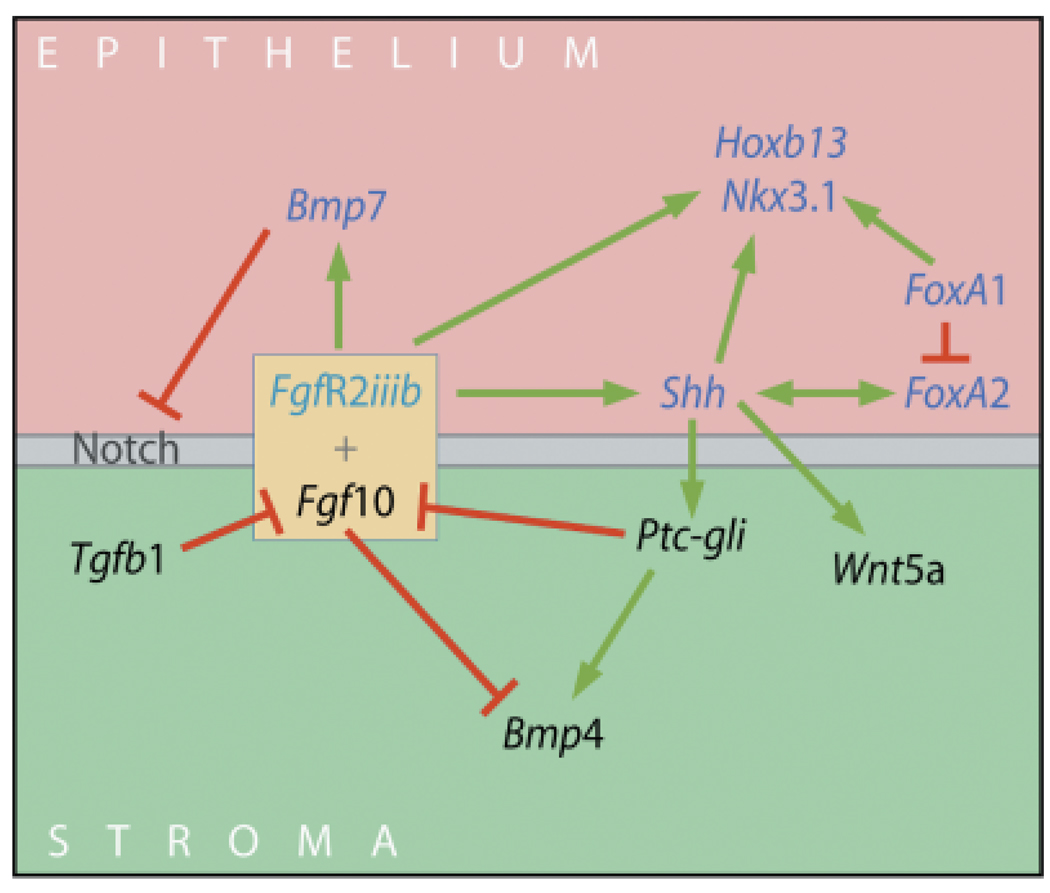Fig. 7.
A schematic representation of regulatory networks between secreted morphogens and transcription factors in the epithelial and mesenchymal cells at the distal signaling center of the developing prostate gland. Fgf10 (mesenchymal) and FgfR2iiib (epithelial) upregulate (green arrows) epithelial expression of Shh and Bmp7 involved in branching morphogenesis as well as Hoxb13 and Nkx3.1 involved in epithelial differentiation. Shh up-regulates ptc and gli in adjacent mesenchymal cells which down-regulates (red lines) Fgf10 expression thus establishing a negative feedback loop for controlled growth. Shh-ptc-gli also up-regulates the growth inhibitory Wnt5a and Bmp4 molecules in the mesenchyme while Fgf10 down-regulates their expression which further serves to tightly control localized tissue growth. FoxA1 stimulates expression of Nkx3.1 and inhibits FoxA2 expression which has reciprocal up-regulation with Shh. Fgf10/FgfR2iiib up-regulates Notch expression, which drives ductal growth while Bmp7 down-regulates Notch and suppresses regional growth. Tgfβ1 suppresses Fgf10 expression, which may serve as a brake for growth as development nears completion.

